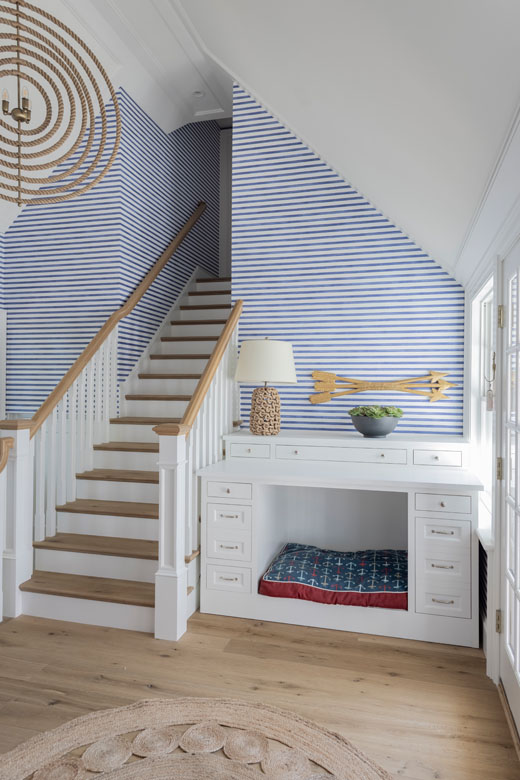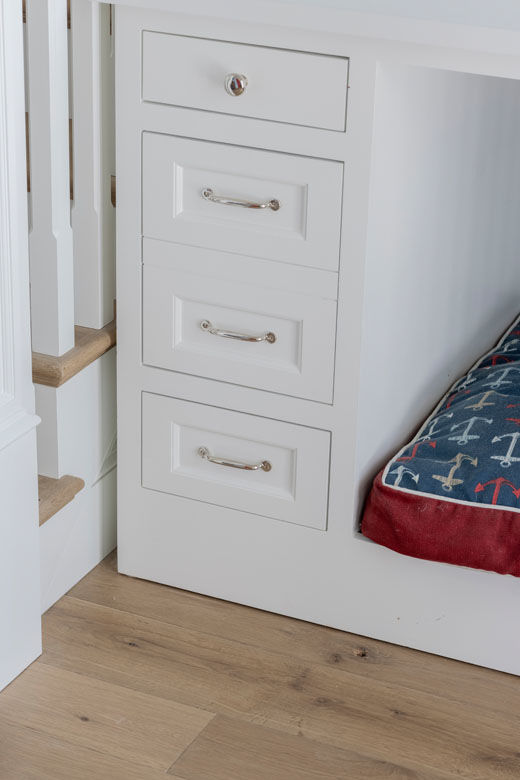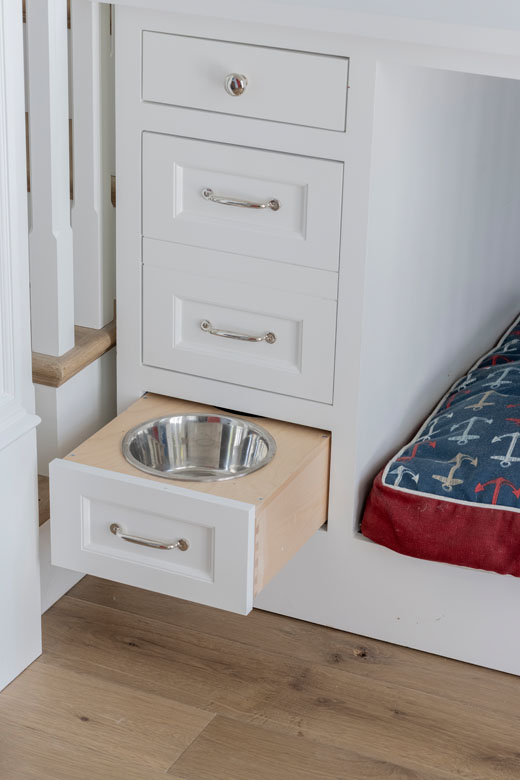In the last several decades, pet ownership in the United States has grown exponentially, especially during the pandemic, when 23 million households acquired a new pet. For many, these four-legged friends are true family members, so it comes as no surprise that clients often ask to add animal-friendly ideas into custom residential architecture. From dogs and cats to horses, goats, and chickens, we’ve designed for them all. Below are a few of our favorite solutions for pet-friendly architecture.
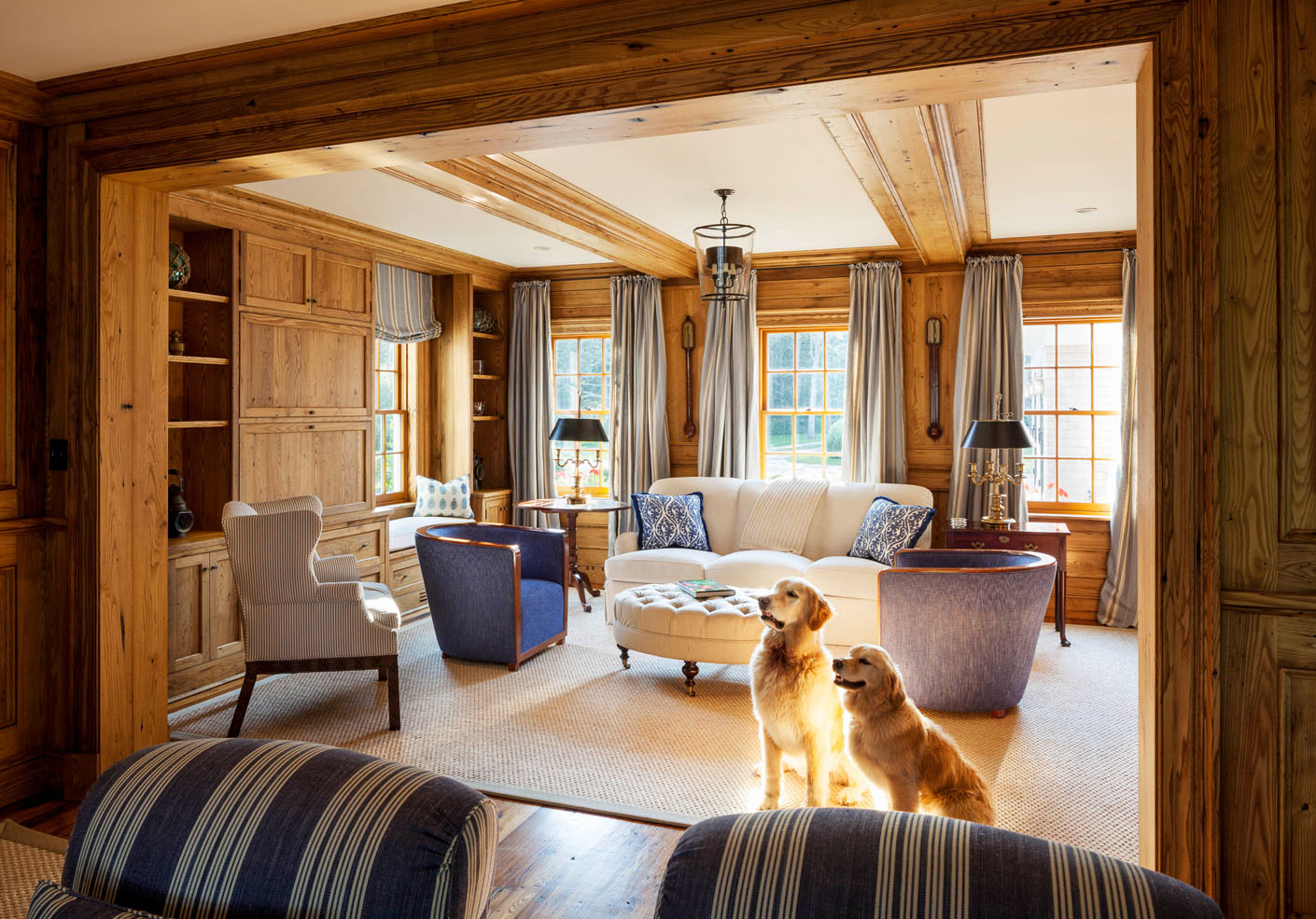
While furry friends are beloved, the mud and debris they can track through the house are not. One creative solution is to incorporate a pet station near a home’s primary entryway. Typically designed within transition spaces such as the mudroom or a connector off the garage, pet stations allow for a muddy animal to be cleaned up before entering the main part of the house. The layout can be as simple as an area with a small sink, bench, and storage hooks, or can be designed as a comprehensive animal room, complete with a tiled dog shower, radiant heat, and drawers for supplies and toys.
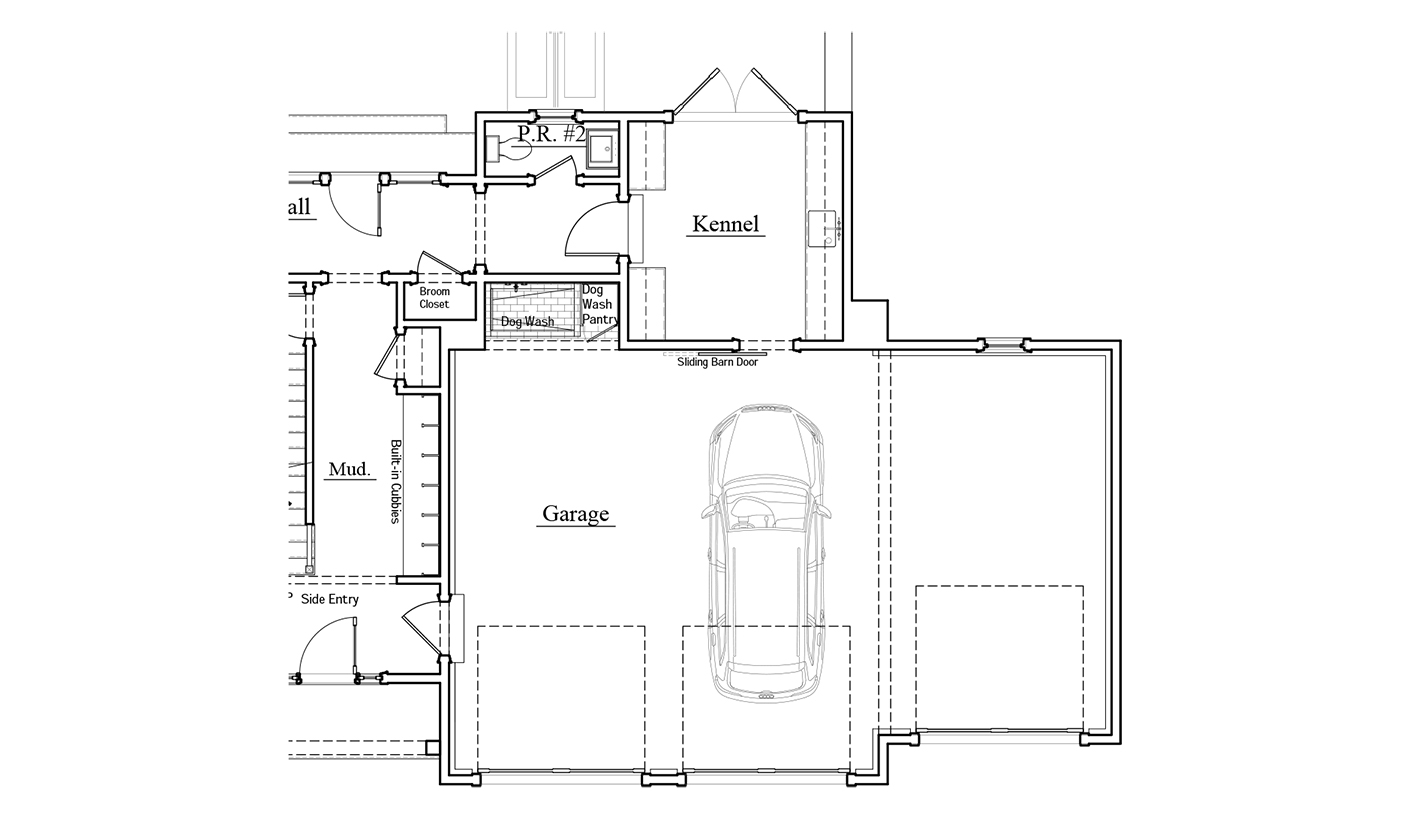
Inside a home’s main living areas, there are additional dog- and cat-friendly design solutions to consider. One practical feature worth pursuing is a convenient feeding zone within the kitchen. A low, pullout drawer is a great option because it eliminates the chance of tripping over food bowls when cooking. Once a pet’s meal is finished the feeding drawer can be closed and the bowls can be hidden away. Another convenient alternative is creating a feeding nook built within the end of a kitchen island. Similar to the feeding drawer, this option keeps bowls out of the way while seamlessly integrating the feeding zone into the kitchen design.
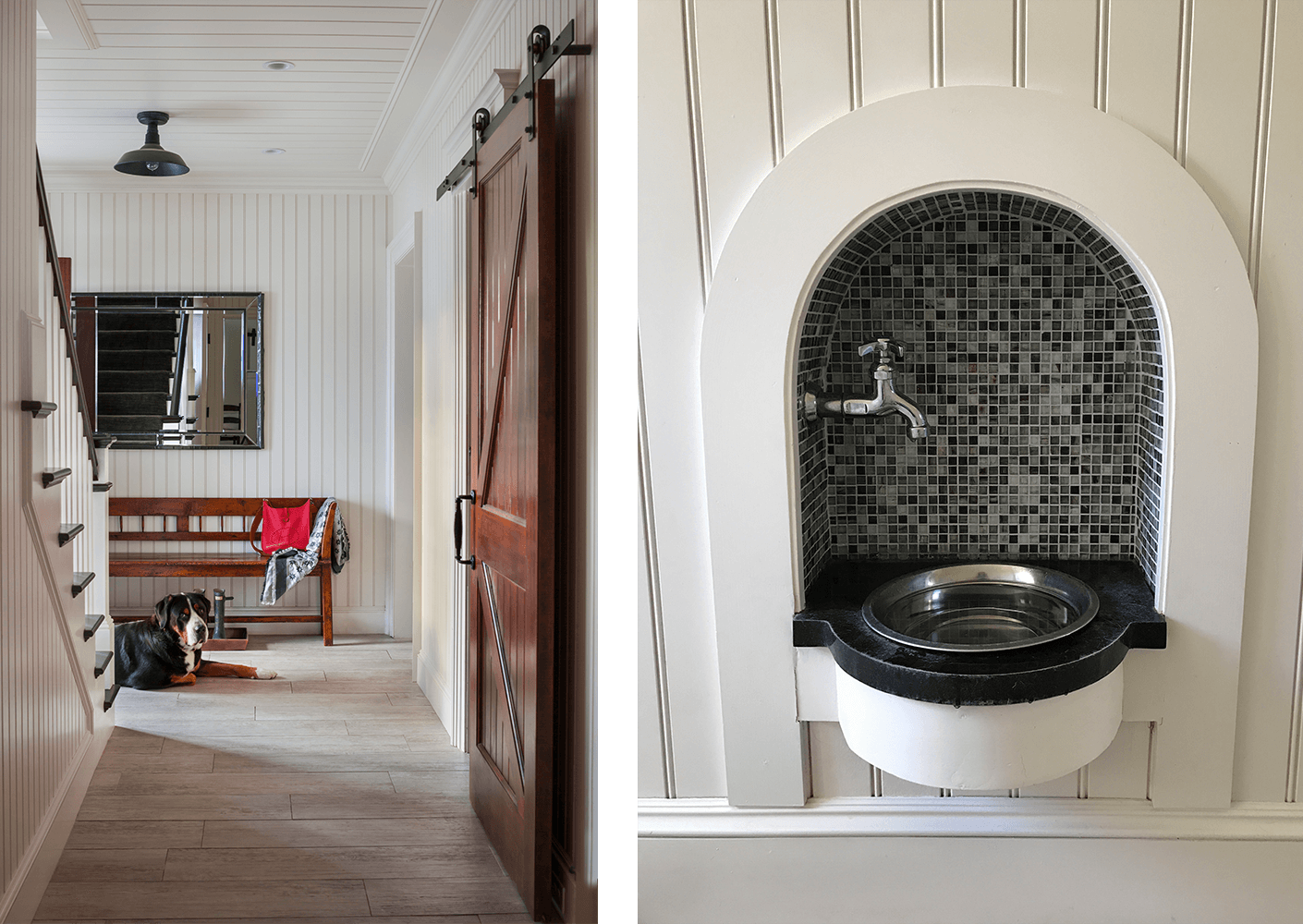
Further, if pets don’t have full run of the house it can be helpful to keep them within a designated space of their own. Designing a tasteful divider such as a pocket gate that retracts into the wall is a wonderful solution to enclose such a space. Often made with mesh or vertical baluster, these dividers are similar to baby gates but are far more attractive and decidedly more convenient. Should a pet only need his or her own enclosed sleeping space, a cozy dog den or cat hideaway can be tucked into spaces under a stairwell, mudroom bench, or even within custom cabinetry, eliminating the need for an unsightly metal or plastic crates.
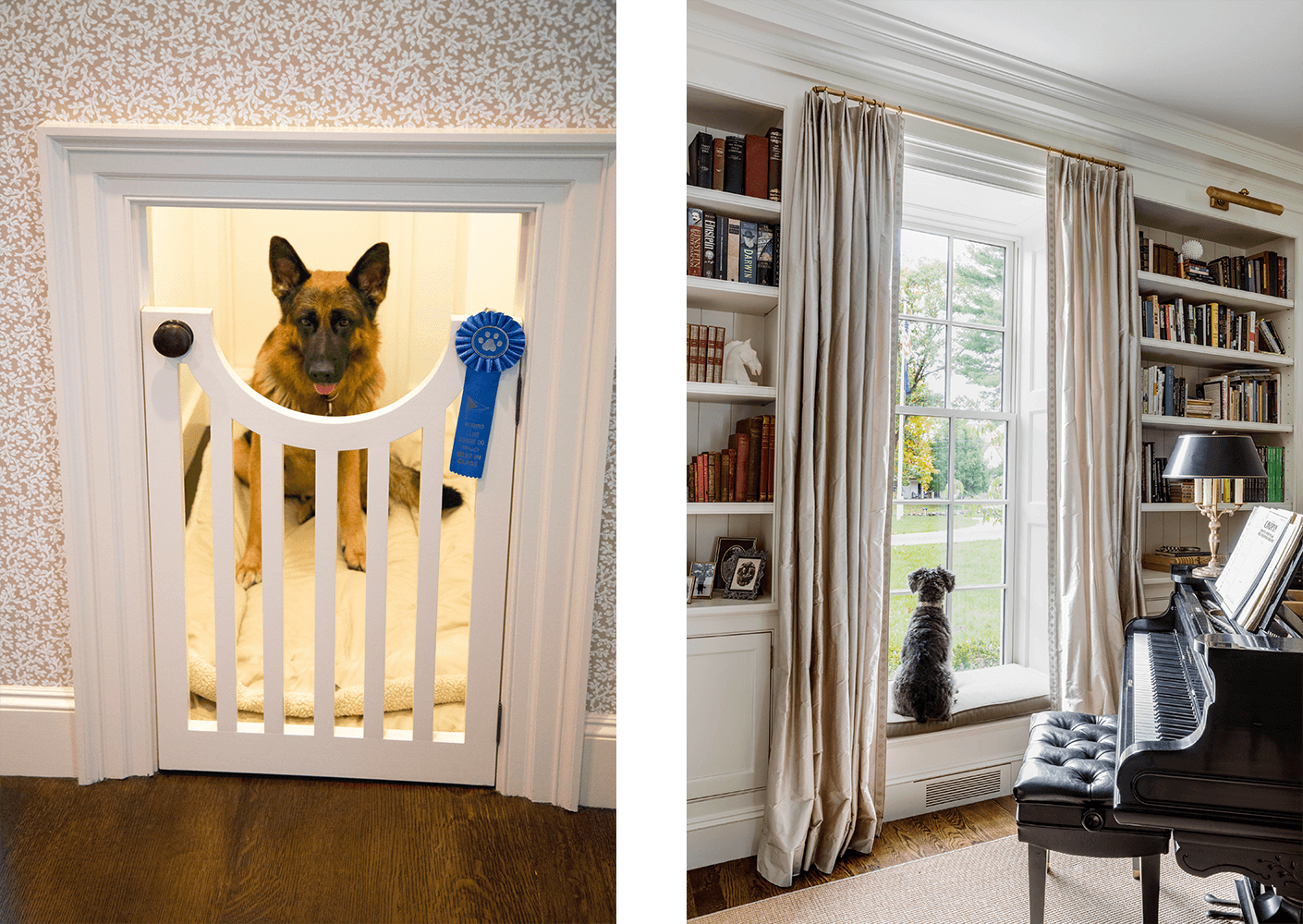
View this post on Instagram
In one recently completed project, a group of goats and chickens were a veritable part of the family. To accommodate the animals’ needs, a separate shelter and chicken coop were tucked behind the carriage house wing of the home. These spaces were expressly designed to be visible from the main family rooms of the house so homeowners could check on their animals and appreciate them throughout the day.
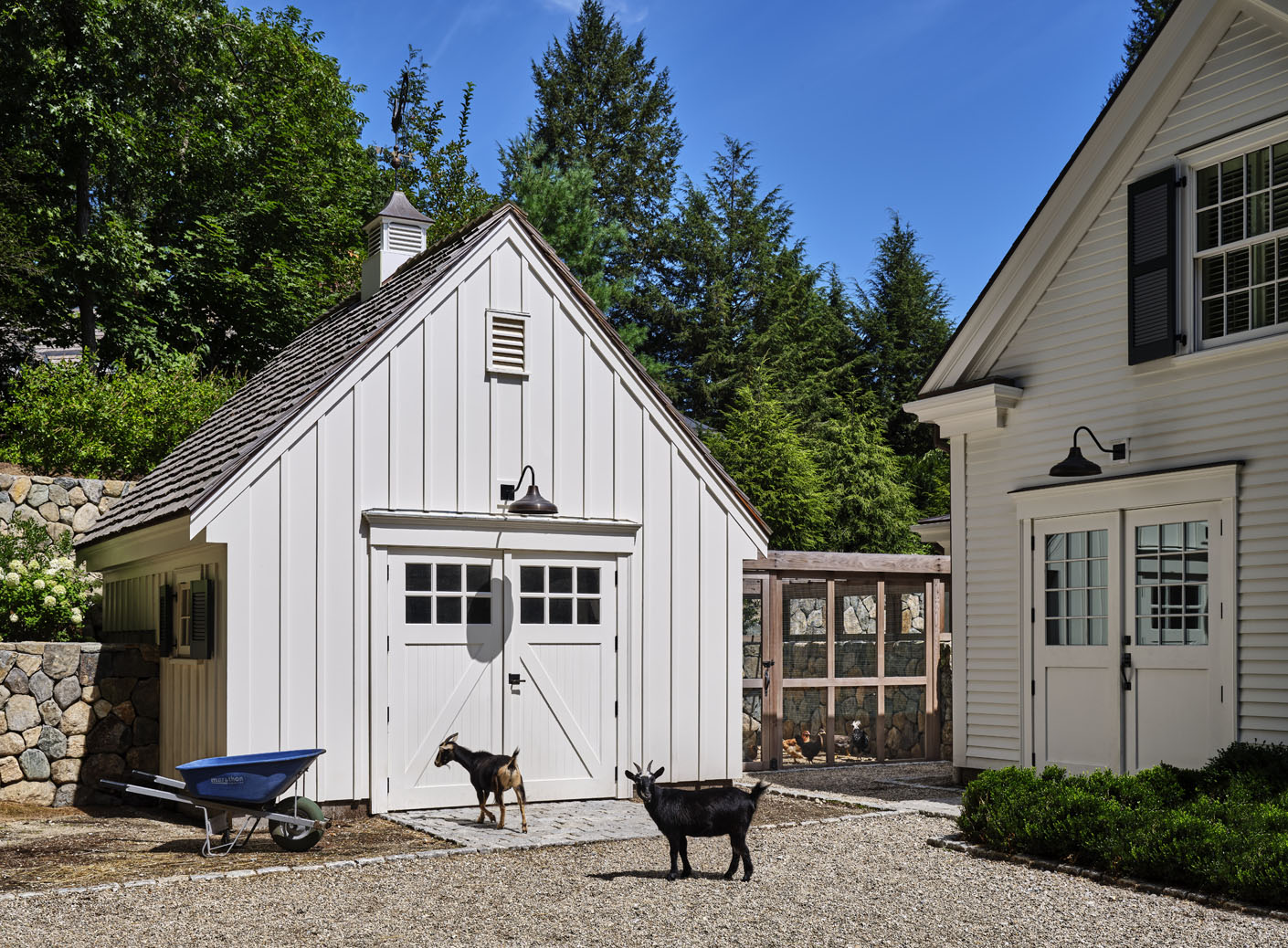
Last, when family members are of the equine variety, a bespoke barn is the ultimate architectural addition. Outfitted with the same elevated level of architectural trim as the main residence, these custom barns are anything but agrarian and offer exceptional housing for horses plus unique entertaining spaces, tack rooms, and hay lofts.
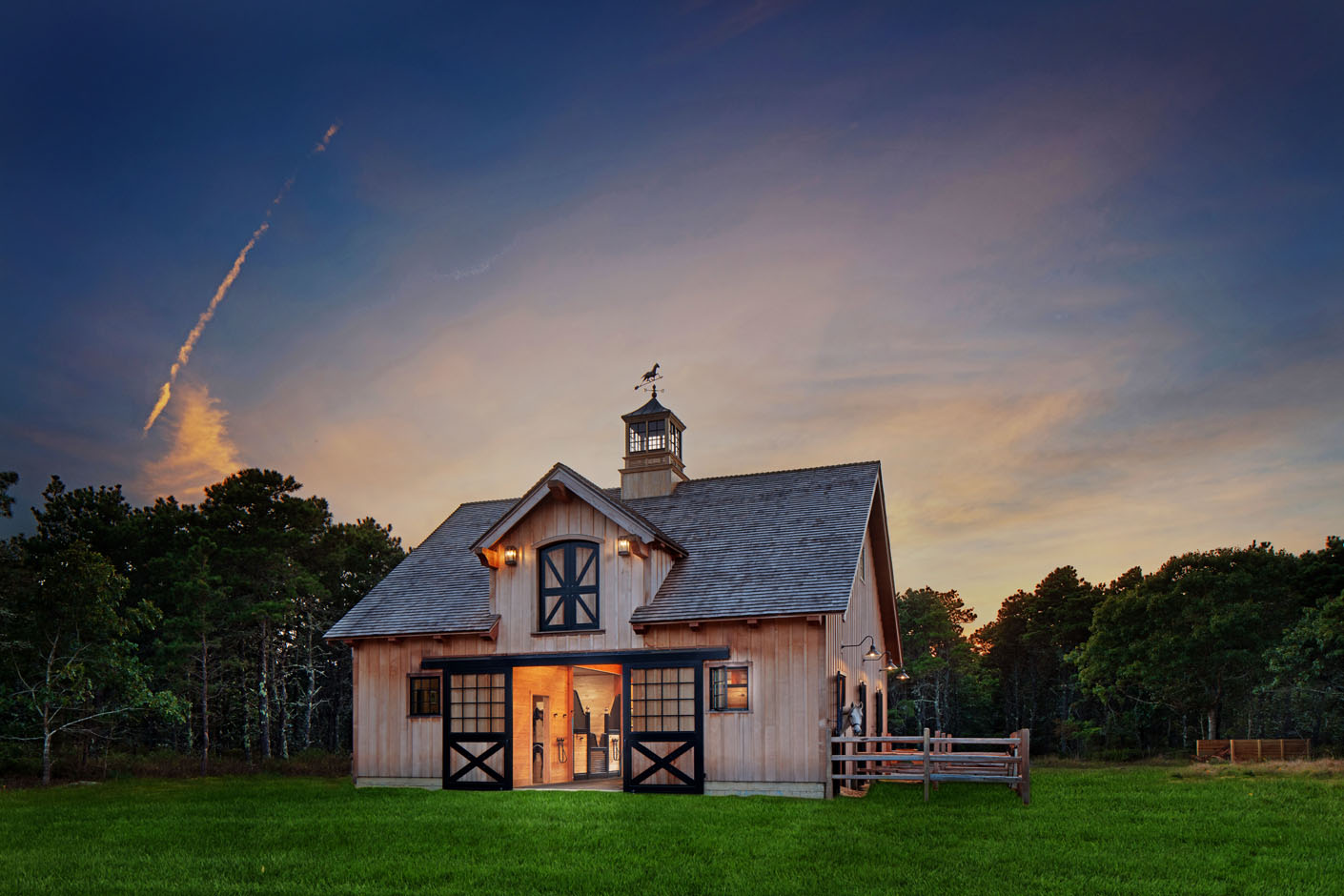
If you’d like to explore pet-friendly architecture in your own custom home or renovation, contact us to learn how we might approach the project. In the interim, we invite you to find meaningful inspiration in our portfolio.
